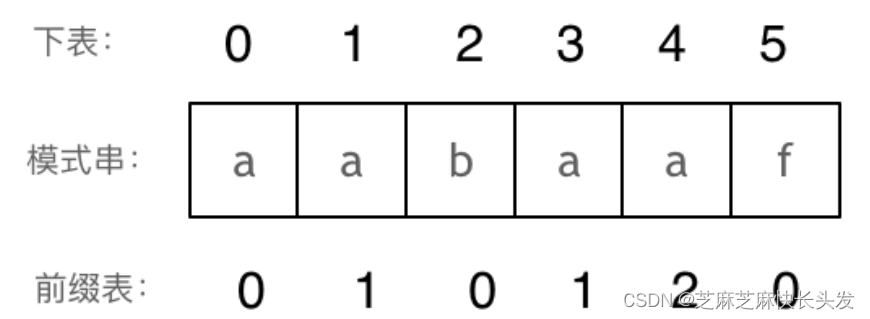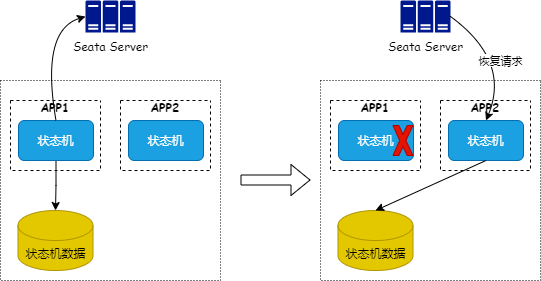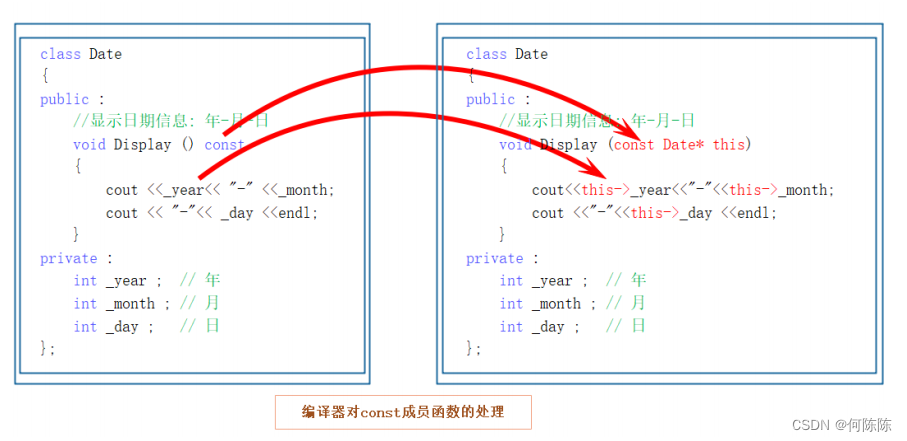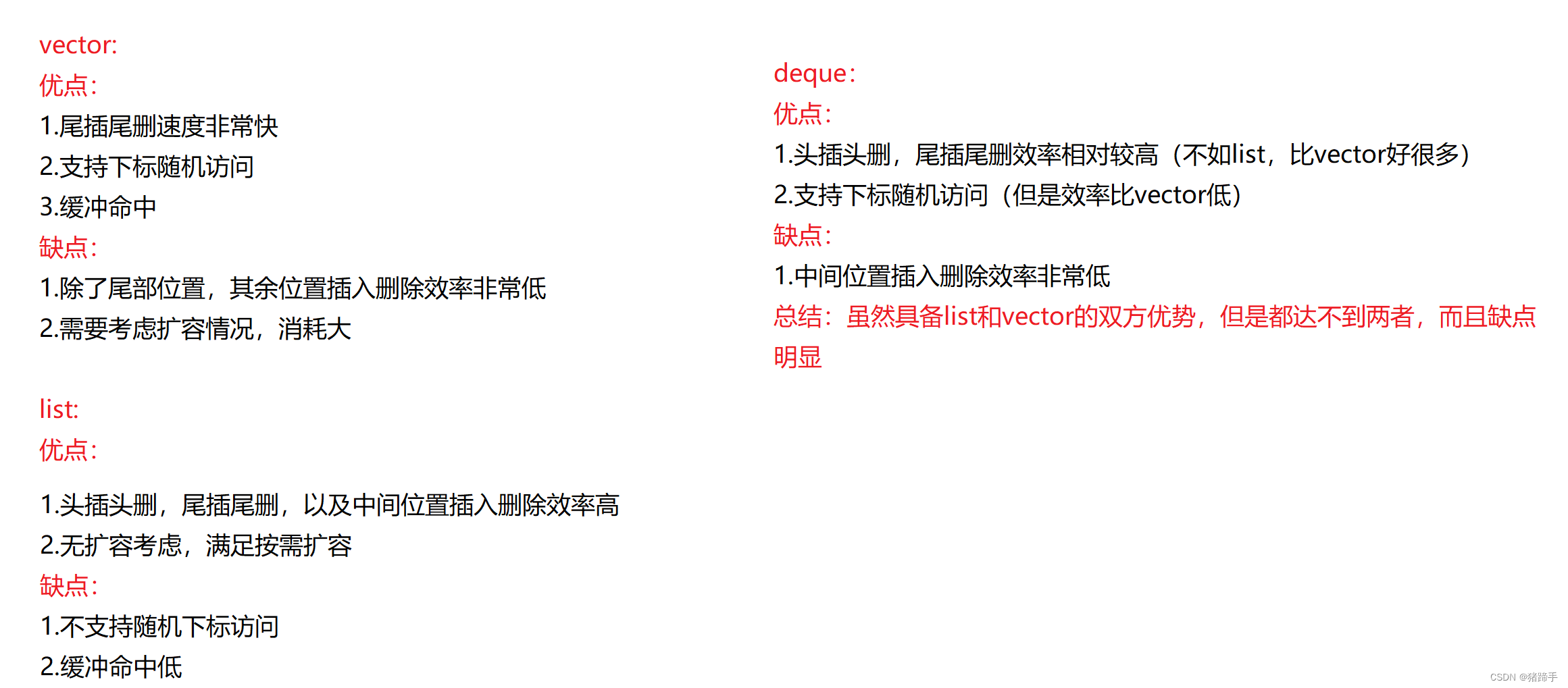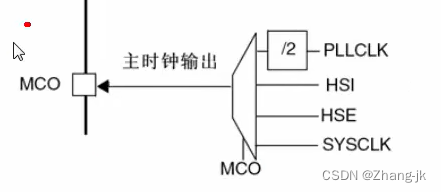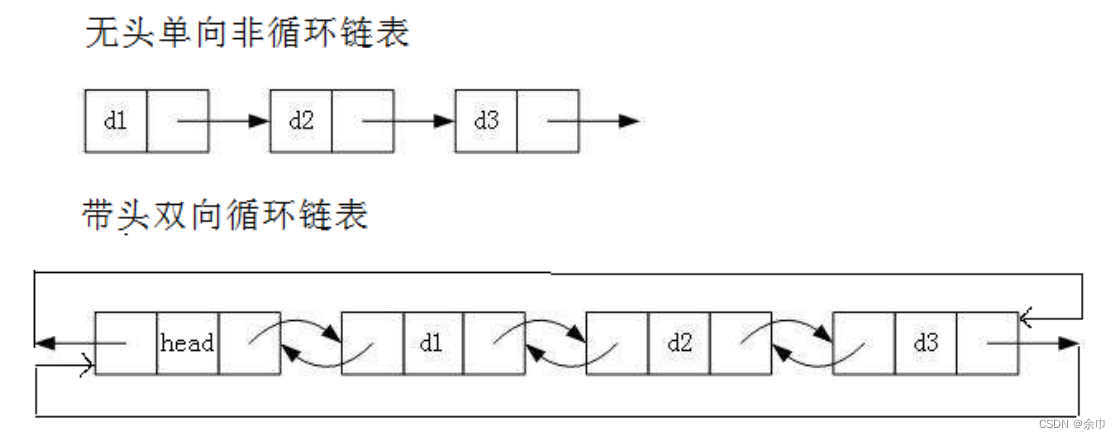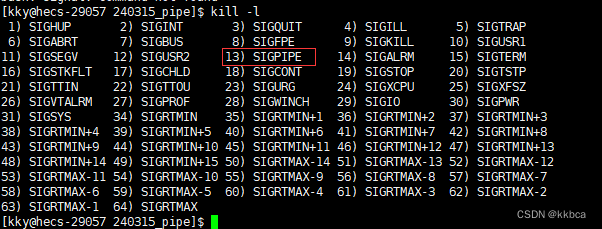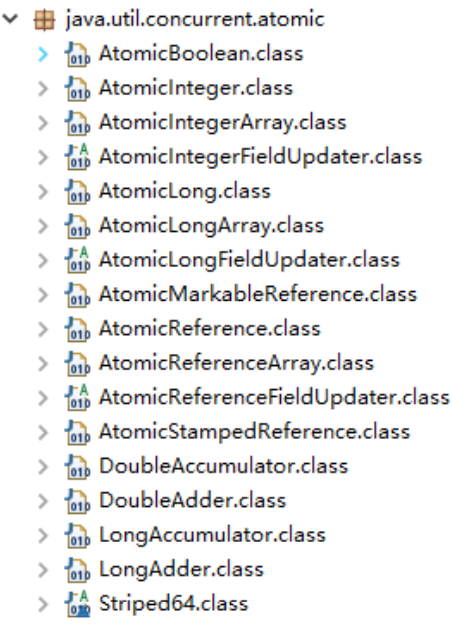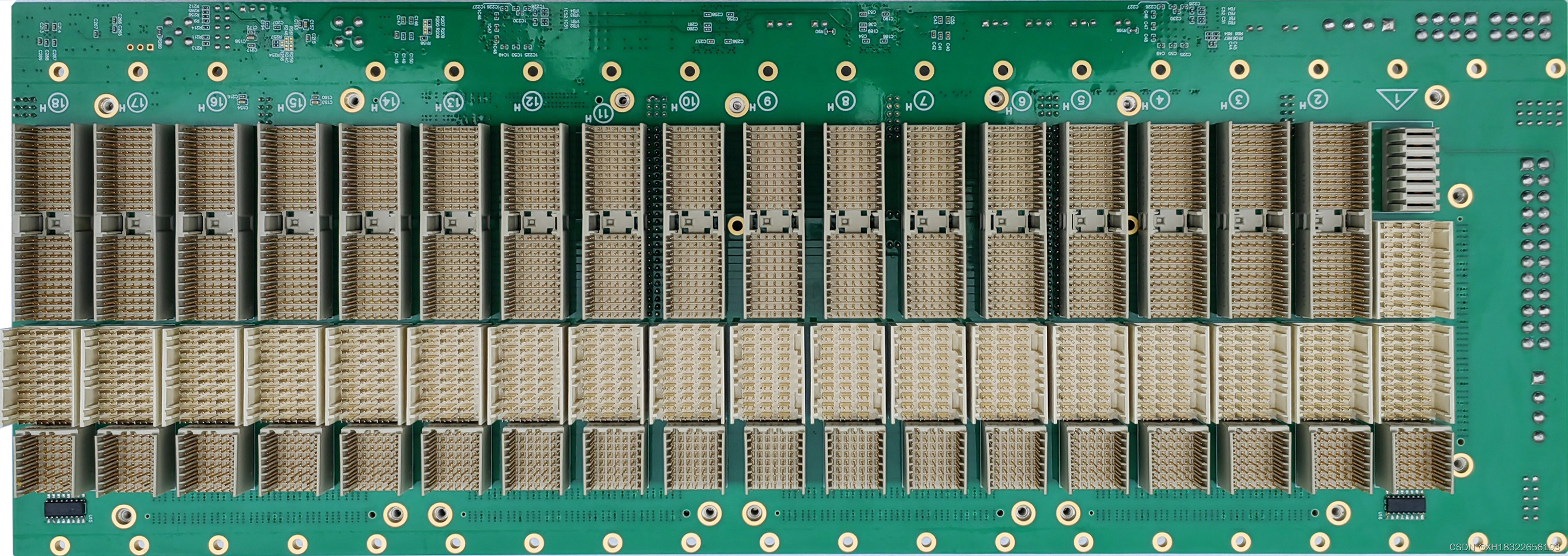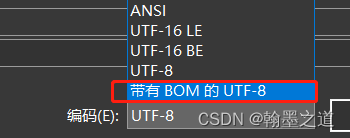目录
一、龙芯向量表与启动程序的入口(复位向量)
1.1 复位向量:
1.2 代码执行流程
1.3 计算机的南桥 VS 北桥
二、PMON代码执行流程
三、Start.S详解
3.1 CPU初始化时所需要的宏定义
(1)与CPU相关的一些宏定义有
(2)编译指示
(3)程序入口指示
(4)第一条可执行的指令
(5)确保在uncache的地址空间运行代码,而不是在Cache地址空间运行代
(6)异常向量
3.2 异常向量
3.3 初始化内存
3.4 内存地址修正
3.5 初始化北桥和串口
3.6 初始化E2PROM,并且读取E2PROM参数
3.7 初始化Cache
3.8 PMON自身从ROM中拷贝到RAM(在Cache之后)
3.9 汇编到C语言
它山之石:
一、龙芯向量表与启动程序的入口(复位向量)

1.1 复位向量:
当整个板子起电后,CPU将从 0xBFC00000 取指令开始执行,而ROM在系统中的地址就是从该地址开始的。所以,其中0xBFC00000 处的第一条指令就是整个过程中 CPU 要执行的第一个指令。
+++++++++++++++++++++++++++++++++++++++++
1.2 代码执行流程
+++++++++++++++++++++++++++++++++++++++++
- 初始化CPU内的寄存器,清TLB.
- 初始化一些北桥的基本配置,以确保uart能够正常工作.
- 初始化uart,主要是设置波特率.
- 初始化内存DDR RAM(主要通过I2C协议从内存自带的EEPROM读取内存参数来进行设置).
- 初始化cache.
- 拷贝ROM中的pmon的代码到内存DDRM,然后通过
- la v0, initmips
- jalr v0
- nop
- 从此代码便到内存中间去了,从这开始因为可以读写内存,所以有了栈,故可以用C的代码了,所以以后的程序便是C代码了
1.3 计算机的南桥 VS 北桥
南桥和北桥是早期计算机系统中的两个主要组件,它们起着连接和协调计算机内部各部件工作的重要作用。它们的功能在现代计算机体系结构中已经被集成到了更复杂的芯片组中,因此南桥和北桥的区分已经不那么明显了。不过,我们可以回顾一下它们的基本概念:
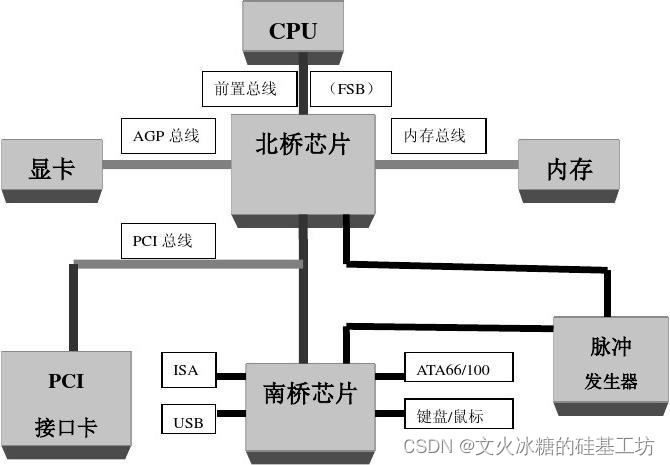
-
北桥(Northbridge):
- 北桥是计算机系统中的一种芯片组件,通常位于主板上,靠近 CPU。
- 它负责处理与高速组件的连接,例如内存(RAM)、图形处理器(GPU)和一些扩展插槽(例如PCI Express)。
- 在早期计算机系统中,北桥也负责处理内存控制器功能,但随着技术的发展,内存控制器已经被集成到了 CPU 中,因此这个功能已经不再需要。
-
南桥(Southbridge):
- 南桥也是一种芯片组件,通常位于主板上,相对于北桥位置更靠近外部连接端口(如USB、SATA、网络端口等)。
- 它负责管理和控制低速设备的连接,例如硬盘驱动器、键盘、鼠标和其他外围设备。
- 南桥也负责处理一些I/O功能,例如PCI总线、USB控制器等。
总的来说,北桥和南桥在早期计算机系统中扮演了连接和协调内部各个组件的角色,但随着技术的发展,这些功能已经被整合到更复杂的芯片组中,而不再是单独的北桥和南桥芯片。
二、PMON代码执行流程
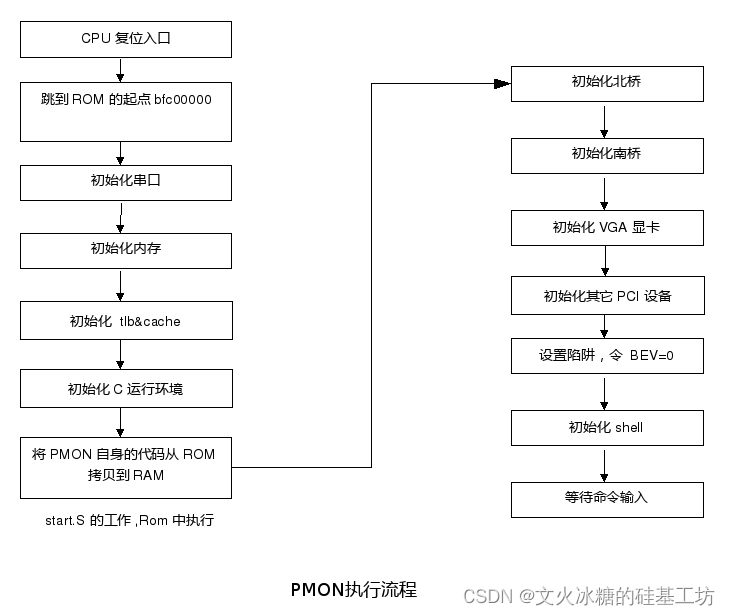
当整个板子起电或复位异常后,CPU将从 0xBFC00000 取指令开始执行,而ROM在系统中的地址就是从该地址开始的。所以,ROM的第一条指令就是整个过程中 CPU 要执行的第一个指令。
- 初始化CPU内的寄存器,清TLB.
- 初始化一些北桥的基本配置,以确保uart能够正常工作.
- 初始化uart,主要是设置波特率.
- 初始化内存(主要通过I2C协议从内存的EEPROM读取内存参数来进行设置).
- 初始化cache.
- 拷贝pmon的代码到内存,然后通过
la v0, initmips
jalr v0
nop
从此代码便到内存中间去了,从这开始因为可以读写内存,所以有了栈,故可以用C的代码了,所以以后的程序便是C代码了.三、Start.S详解
3.1 CPU初始化时所需要的宏定义
start.S文件在 /Targets/Bonito/Bonito 目录当中,是整个PMON代码的起点。我们首先研究它。
文件一开头是版权声明部分,然后是包括一些头文件,然后是一些宏定义,然后才是代码。
(1)与CPU相关的一些宏定义有
/* * Register usage: * * s0 link versus load offset, used to relocate absolute adresses. * s1 free * s2 memory size. * s3 free. * s4 Bonito base address. * s5 dbg. * s6 sdCfg. * s7 rasave. * s8 L3 Cache size. */ #define tmpsize s1 #define msize s2 #define bonito s4 #define dbg s5 #define sdCfg s6
(2)编译指示
下面是程序的开头,不过并不生成实际的二进制数据,它告诉编译汇编器一些信息。
.set noreorder
.globl _start
.globl start
.globl __main
(3)程序入口指示
_start: //程序入口标识
start:
.globl stack
stack = start - 0x4000 /* Place PMON stack below PMON start in RAM */
=====================
解释:
.set noreorder
是告诉汇编汇编器不要对后面的代码进行优化处理,比如重新排列执行代码。
.globl _start
.globl start
.globl __main
这里,定义了三个全局符号。可以PMON代码中的任何地方引用它。
_start:
start:
.globl stack
stack = start - 0x4000 /* Place PMON stack below PMON start in RAM */
在这里定义了子程序的名称 _start 和 start。
并定义了堆栈的栈底 stack 值,在 start 以下 16K 处。栈地址通常在RAM中,而不是ROM中。
这里的代码说明:
-- 启动前,RAM的地址空间在ROM的地址空间一下.
-- RAM地址空间的最高处保留了16K的地址空间,用于系统堆栈。
=====================
栈(Stack)是计算机科学中一种基本的数据结构,它是一种先进后出(Last In, First Out,LIFO)的数据结构。栈通常用于存储临时数据以及函数调用的上下文信息。
栈的特点包括:
后进先出(LIFO):最后存入栈的数据项首先被取出。这是栈的基本原则,也是它与其他数据结构(如队列)的主要区别之一。
压栈(Push):将数据项放入栈顶的操作称为压栈。新的数据项被添加到栈顶,使其成为栈的新顶部。
弹栈(Pop):从栈顶移除数据项的操作称为弹栈。弹栈操作会移除栈顶的数据项,并将栈顶指针向下移动。
栈顶指针:栈顶指针是指向栈顶元素的位置的指针,它指示了下一个压入栈的元素应该存放的位置,同时也指示了下一个弹出的元素是什么。
栈在计算机科学中有广泛的应用,包括但不限于:
函数调用:每当调用一个函数时,其局部变量和返回地址会被压入栈中,函数执行完毕后再从栈中弹出这些信息。
表达式求值:在编译器和解释器中,栈常用于表达式求值,特别是中缀表达式转换为后缀表达式以及后缀表达式的计算。
内存管理:栈还被用于内存管理,例如函数调用栈可以用来跟踪内存分配和释放。
递归:递归函数调用时,每一层递归调用都会在栈上创建一个新的帧,递归结束后这些帧会依次从栈中弹出。
总之,栈是一种非常重要的数据结构,它在计算机科学中有着广泛的应用。


(4)第一条可执行的指令
下面是程序执行的第一条语句
/* NOTE!! Not more that 16 instructions here!!! Right now it's FULL! */
mtc0 zero, COP_0_STATUS_REG //清除CP0状态寄存器
mtc0 zero, COP_0_CAUSE_REG //清除CP0原因寄存器
li t0, SR_BOOT_EXC_VEC /* 这是一个加载立即数的指令:Exception to Boostrap Location */
mtc0 t0, COP_0_STATUS_REG
/* SR's BEV bit is set so the CPU uses the ROM(kseg1) space exception entry point when reboot exception occurs
la sp, stack
la gp, _gp
=====================
解释:
由于龙芯的地址空间决定,这里的代码不能超过0x100,即256字节,因为后面紧跟着的是中断向量的地址。
接着,就把 CP0 的状态寄存器 COP_0_STATUS_REG 和 COP_0_CAUSE_REG 寄存器全部清空为0。
li t0, SR_BOOT_EXC_VEC
接着设置状态寄存器的BEV位,这样就是让 CP0 运行在没有 TLB 的模式,并且一旦发生异常,
就进入ROM 的 bfc00000 位置重启。
后面两句主要设置引导程序的堆栈空间,
la sp, stack 是把栈底地址给 sp 寄存器,
la gp, _gp 是把编译器中的 _gp 全局地址给 gp 寄存器,这样做法是让全局变量可以作相对寄存器寻址。
其中_gp是在连接脚本文件里定义的。
Exception to Bootstrap Location” 是一个描述异常处理程序应该跳转到的引导位置的术语。在计算机系统中,当发生异常(如内存访问错误、除以零等)时,系统需要知道应该执行哪些操作来处理这些异常。因此,程序员会设置一个异常处理程序,用于处理不同类型的异常情况。
“Boostrap Location” 可以理解为引导程序的位置,即系统启动时执行的第一个位置。在异常发生时,系统可能需要跳转到引导位置,以便进行异常处理或其他必要的操作。
因此,“Exception to Boostrap Location” 可以被理解为设置异常处理程序应该跳转到的系统引导位置。这在上下文中通常用于设置异常向引导位置注册,以确保在发生异常时能够正确地处理异常情况并返回到引导位置进行进一步处理。
=====================
(5)确保在uncache的地址空间运行代码,而不是在Cache地址空间运行代
#define KUSEG_ADDR 0x0
#define CACHED_MEMORY_ADDR 0x80000000
#define UNCACHED_MEMORY_ADDR 0xa0000000
#define KSEG2_ADDR 0xc0000000
#define MAX_MEM_ADDR 0xbe000000
#define RESERVED_ADDR 0xbfc80000
bal uncached
nop
bal locate
nop
uncached:
or ra, UNCACHED_MEMORY_ADDR
j ra
nop
=====================
解释:
这段程序先进行一个无条件跳转连接指令,这样做的目的很明确就是想清空预取指令和流水线的指令。
这样就跳到 uncached 这里运行。
先来看看bal指令会做些什么事情,
通常bal指令会算出跳转到的目的地址相对于PC寄存器的偏移量,
然后把PC+8指令地址放到ra寄存器里,也就是把bal locate指令地址放到RA寄存器,以便可以返回。
由于龙芯2E的加电时启动地址是 0xBFC0 0000,那么放在ra里的值就是 0xBFCO 0028(第8条指令)。
后面
or ra, UNCACHED_MEMORY_ADDR,这里进行是与0xA000 00000的或运算,
也就是说从ROM加载时,不会改变返回地址 ra 的值。
写这句的目的主要是保证要从ROM中运行后面的一段程序,而不是从其它地址(RAM中)运行。
所以接着就跳回来到 bal locate位置并执行 bal locate 指令,这样就跳到 locate 的位置执行程序了。
=====================
(6)异常向量
在MIPS中,异常处理入口有两套,通过 CP0 的 STATUS 寄存器位 BEV 来决定,
当 BEV=1 时,异常的入口地址为 0xBFC00000 开始的地址。
而 BEV=0,异常地址为 0x80000000 开始的地址,
所以PMON程序段开始处是一些异常的调入口,需要跳过这段空间,
程序就是通过这个 bal 指令跳到后面的

3.2 异常向量
下面是那段被跳过去的异常代码
/*
* Reboot vector usable from outside pmon.
*/
/* started in aligned address by 2^8=256 Bytes, that is 0xbfc00000 + 0x100 = 0xbfc00100 */
.align 8
ext_map_and_reboot:
bal CPU_TLBClear
nop
li a0, 0xc0000000
li a1, 0x40000000
bal CPU_TLBInit
nop
la v0, tgt_reboot
la v1, start
subu v0, v1
lui v1, 0xffc0
addu v0, v1
jr v0
nop
/*
* Exception vectors here for rom, before we are up and running. Catch
* whatever comes up before we have a fully fledged exception handler.
*/
/* TLB refill exception */
/* bfc00200, this code address is 0xbfc00200, 2^9 = 512 Bytes, it is a exception process function */
.align 9
move k0, ra /* save ra */
la a0, v200_msg
bal stringserial
nop
b exc_common
.align 7 /* bfc00280 */
move k0, ra #save ra
la a0, v280_msg
bal stringserial
nop
b exc_common // print the CP0 register's infomation
/* Cache error handler */
.align 8 /* bfc00300 */
PRINTSTR("\r\nPANIC! Unexpected Cache Error exception! ")
mfc0 a0, COP_0_CACHE_ERR
bal hexserial
nop
b exc_common
/* General exception handler */
.align 7 /* bfc00380 */
move k0, ra #save ra
la a0, v380_msg
bal stringserial
nop
b exc_common
.align 8 /* bfc00400 */
move k0, ra #save ra
la a0, v400_msg
bal stringserial
nop
/* when the exception occurs, do this code to present the CP0 register's content */
exc_common:
PRINTSTR("\r\nCAUSE=")
mfc0 a0, COP_0_CAUSE_REG
bal hexserial
nop
PRINTSTR("\r\nSTATUS=")
mfc0 a0, COP_0_STATUS_REG
bal hexserial
nop
PRINTSTR("\r\nERRORPC=")
mfc0 a0, COP_0_ERROR_PC
bal hexserial
nop
PRINTSTR("\r\nEPC=")
mfc0 a0, COP_0_EXC_PC
bal hexserial
nop
PRINTSTR("\r\nBADVADDR=")
mfc0 a0, COP_0_BAD_VADDR
bal hexserial
nop
PRINTSTR("\r\nRA=")
move a0, k0
bal hexserial
nop
// b ext_map_and_reboot
nop
/* control the distribution of the code, here we insert a bank 256 Bytes. */
.align 8
nop
/* handler name table */
.align 8
.word read
.word write
.word open
.word close
.word nullfunction
.word printf
.word vsprintf
.word nullfunction
.word nullfunction
.word getenv
.word nullfunction
.word nullfunction
.word nullfunction
.word nullfunction
3.3 初始化内存
让我们看看 locate 标号之后的代码是些什么
/*
* We get here from executing a bal to get the PC value of the current execute
* location into ra. Check to see if we run from ROM or if this is ramloaded.
*/
locate:
la s0, start
subu s0, ra, s0
and s0, 0xffff0000
li t0, SR_BOOT_EXC_VEC
mtc0 t0, COP_0_STATUS_REG
mtc0 zero, COP_0_CAUSE_REG
.set noreorder
/* the varible bonito is register s4, BONITO_REG_BASE is 0x1fe00000 */
li bonito, PHYS_TO_UNCACHED(BONITO_REG_BASE)
bal 1f
nop /* now the value of ra is 0xbfc00xxx */
/* bonito endianess */
BONITO_BIC(BONITO_BONPONCFG, BONITO_BONPONCFG_CPUBIGEND)
BONITO_BIC(BONITO_BONGENCFG, BONITO_BONGENCFG_BYTESWAP|BONITO_BONGENCFG_MSTRBYTESWAP)
BONITO_BIS(BONITO_BONPONCFG, BONITO_BONPONCFG_IS_ARBITER)
/*
* In certain situations it is possible for the Bonito ASIC
* to come up with the PCI registers uninitialised, so do them here
*/
BONITO_INIT(BONITO_PCICLASS,(PCI_CLASS_BRIDGE << PCI_CLASS_SHIFT) | (PCI_SUBCLASS_BRIDGE_HOST << PCI_SUBCLASS_SHIFT))
BONITO_INIT(BONITO_PCICMD, BONITO_PCICMD_PERR_CLR | BONITO_PCICMD_SERR_CLR | BONITO_PCICMD_MABORT_CLR | BONITO_PCICMD_MTABORT_CLR | BONITO_PCICMD_TABORT_CLR | BONITO_PCICMD_MPERR_CLR )
//BONITO_INIT(BONITO_PCILTIMER, 0)
BONITO_INIT(BONITO_PCILTIMER, 255)
BONITO_INIT(BONITO_PCIBASE0, 0)
BONITO_INIT(BONITO_PCIBASE1, 0)
BONITO_INIT(BONITO_PCIBASE2, 0)
BONITO_INIT(BONITO_PCIEXPRBASE, 0)
BONITO_INIT(BONITO_PCIINT, 0)
BONITO_BIS(BONITO_PCICMD, BONITO_PCICMD_PERRRESPEN)
BONITO_BIS(BONITO_PCICMD, PCI_COMMAND_IO_ENABLE|PCI_COMMAND_MEM_ENABLE|PCI_COMMAND_MASTER_ENABLE)
BONITO_BIC(BONITO_BONGENCFG, 0x80) #½ûÖ¹iobc
#BONITO_BIS(BONITO_BONGENCFG, BONITO_BONGENCFG_BUSERREN)
/* Set debug mode */
BONITO_BIS(BONITO_BONGENCFG, BONITO_BONGENCFG_DEBUGMODE)
/******** added to init southbridge*/
#ifdef VGA_NOTEBOOK_V2
ISA_BRMW_INIT(0,0x74,0xeb,0x0)
ISA_BRMW_INIT(0,0x75,0xff,0x20)
ISABWWR_INIT(4,0x48,0xb000)
ISABBWR_INIT(4,0x41,0x80)
RMW_INIT(MOD_W,(PCI_IO_SPACE+0xb04c),0xffffffdf,0x0)
#endif
// SouthBridge settings
/* Set the SMB base address */
ISABWWR_INIT(4, SMBUS_IO_BASE_ADDR, SMBUS_IO_BASE_VALUE | 0x1)
/* enable the host controller */
ISABHWR_INIT(4, SMBUS_HOST_CONFIG_ADDR, SMBUS_HOST_CONFIG_ENABLE_BIT)
/* enable the SMB IO ports */
ISABBWR_INIT(4, PCI_COMMAND_STATUS_REG, PCI_COMMAND_IO_ENABLE)
ISARD_INIT(CTC_PORT+PT_CONTROL)
/* program i8254 ISA refresh counter */
ISAWR_INIT(CTC_PORT+PT_CONTROL,PTCW_SC(PT_REFRESH)|PTCW_16B|PTCW_MODE(MODE_RG))
ISAWR_INIT(CTC_PORT+PT_REFRESH, ISAREFRESH & 0xff)
ISAWR_INIT(CTC_PORT+PT_REFRESH, ISAREFRESH >> 8)
EXIT_INIT(0)
1:
move a0, ra /* now the value of ra is 0xbfc00xxx */
reginit:
lw t3, Init_Op(a0)
lw t0, Init_A0(a0) /* Init_A0 is 4 */
and t4, t3, OP_MASK /* OP_MASK is 0x000000fc, to keep 4 bytes aligned */
/*
* EXIT(STATUS)
*/
bne t4, OP_EXIT, 8f /* OP_EXIT is 0x00000000 */
nop
move v0, t0 /* now v0 is the content of 4 bytes offset from 0xbfc000xx */
b .done
nop
/*
* DELAY(CYCLES)
*/
8: bne t4, OP_DELAY, 8f /* OP_DELAY is 0x00000008 */
nop
1: bnez t0,1b /* t0 不等于 0就在这死循环 */
subu t0,1
b .next
nop
/*
* READ(ADDR)
*/
8: bne t4, OP_RD, 8f /* OP_RD is 0x00000010 */
nop
and t4, t3, MOD_MASK /* MOD_MASK is 0x00000003 */
bne t4, MOD_B, 1f /* MOD_B is 0x00000000 ??? why not 0x01 or 0x03 */
nop
lbu t5, 0(t0)
b .next
nop
1: bne t4, MOD_H, 1f /* MOD_H is 0x00000001 ??? why not 0x02 */
nop
lhu t5, 0(t0)
b .next
nop
1: bne t4, MOD_W, 1f /* MOD_H is 0x00000002 ??? why not 0x00 */
nop
#if __mips64
lwu t5, 0(t0)
#else
lw t5, 0(t0)
#endif
b .next
nop
1:
#if __mips64
lw t5,0(t0)
b .next
nop
#else
b .fatal
nop
#endif
/*
* WRITE(ADDR,VAL)
*/
8: bne t4, OP_WR, 8f /* OP_WR is 0x00000014 */
nop
lw t1, Init_A1(a0) /* Init_A1 is 8 */
and t4, t3, MOD_MASK /* MOD_MASK is 0x00000003 */
bne t4, MOD_B, 1f
nop
sb t1, 0(t0)
b .next
nop
1: bne t4,MOD_H,1f
nop
sh t1,0(t0)
b .next
nop
1: bne t4,MOD_W,1f
nop
sw t1,0(t0)
b .next
nop
1:
#if __mips64
sd t1,0(t0)
b .next
nop
#else
b .fatal
nop
#endif
/*
* RMW(ADDR,AND,OR)
*/
8: bne t4,OP_RMW,8f
nop
lw t1,Init_A1(a0)
lw t2,Init_A2(a0)
and t4,t3,MOD_MASK
bne t4,MOD_B,1f
nop
lbu t4,0(t0)
and t4,t1
or t4,t2
sb t4,0(t0)
b .next
nop
1: bne t4,MOD_H,1f
nop
lhu t4,0(t0)
and t4,t1
or t4,t2
sh t4,0(t0)
b .next
nop
1: bne t4,MOD_W,1f
nop
lw t4,0(t0)
and t4,t1
or t4,t2
sw t4,0(t0)
b .next
nop
1:
#if __mips64
ld t4,0(t0)
and t4,t1
or t4,t2
sd t4,0(t0)
b .next
nop
#else
b .fatal
nop
#endif
/*
* WAIT(ADDR,MASK,VAL)
*/
8: bne t4,OP_WAIT,8f
nop
lw t1,Init_A1(a0)
lw t2,Init_A2(a0)
and t4,t3,MOD_MASK
bne t4,MOD_B,1f
nop
3: lbu t4,0(t0)
and t4,t1
bne t4,t2,3b
nop
b .next
nop
1: bne t4,MOD_H,1f
nop
3: lhu t4,0(t0)
and t4,t1
bne t4,t2,3b
nop
b .next
nop
1: bne t4,MOD_W,1f
nop
3: lw t4,0(t0)
and t4,t1
bne t4,t2,3b
nop
b .next
nop
1:
#if __mips64
3: ld t4,0(t0)
and t4,t1
bne t4,t2,3b
nop
b .next
nop
#else
b .fatal
nop
#endif
.next:
addu a0, Init_Size /* Init_Size is 16 */
b reginit /* a big repeatation */
nop
8:
.fatal:
b .done
nop
bal stuck /* these two sentences seem been ignored */
nop
=====================
解释:
locate:
la s0, start
subu s0, ra, s0
and s0, 0xffff0000
此时,ra 中的地址值是前面 uncached 标号的地址,第二句作用是计算前面跳转时已运行过的代码的长度,最后一句把零头截掉。
这段代码是为了访问数据,因为这段汇编在Rom执行,而编译出来的数据段在 0x8002xxxx,
为了能够访问数据段的数据,需要进行一个地址的修正,s0 正是起到这种修正的目的。
li t0, SR_BOOT_EXC_VEC
mtc0 t0, COP_0_STATUS_REG
mtc0 zero, COP_0_CAUSE_REG
为保险起见,再清理一遍配置寄存器
.set noreorder
/* the varible bonito is register s4, BONITO_REG_BASE is 0x1fe00000 */
li bonito, PHYS_TO_UNCACHED(BONITO_REG_BASE)
bal 1f
nop /* now the value of ra is 0xbfc00xxx */
将 BONITO_REG_BASE 的物理地址值保存到 s4 寄存器
(通过映射到未经缓存的地址空间里,龙芯 CPU 访问外部空间,只能用映射后的地址),
然后跳转到后面1标号处执行。
1: move a0, ra /* now the value of ra is 0xbfc00xxx */
reginit: /* local name */
lw t3, Init_Op(a0)
lw t0, Init_A0(a0) // Init_A0 is 4
and t4, t3, OP_MASK // OP_MASK is 0x000000fc, to keep 4 bytes aligned
在1标号的地方,取跳转时压入的RA寄存器的值,然后通过寄存器相对寻址的方式,取得跳转指令后面保存的参数,并保存到t3, t0寄存器。
上句说的就是这些参数
/* bonito endianess */
BONITO_BIC(BONITO_BONPONCFG, BONITO_BONPONCFG_CPUBIGEND)
BONITO_BIC(BONITO_BONGENCFG, BONITO_BONGENCFG_BYTESWAP|BONITO_BONGENCFG_MSTRBYTESWAP)
BONITO_BIS(BONITO_BONPONCFG, BONITO_BONPONCFG_IS_ARBITER)
/*
* In certain situations it is possible for the Bonito ASIC
* to come up with the PCI registers uninitialised, so do them here
*/
BONITO_INIT(BONITO_PCICLASS,(PCI_CLASS_BRIDGE << PCI_CLASS_SHIFT) | (PCI_SUBCLASS_BRIDGE_HOST << PCI_SUBCLASS_SHIFT))
BONITO_INIT(BONITO_PCICMD, BONITO_PCICMD_PERR_CLR | BONITO_PCICMD_SERR_CLR | BONITO_PCICMD_MABORT_CLR | BONITO_PCICMD_MTABORT_CLR | BONITO_PCICMD_TABORT_CLR | BONITO_PCICMD_MPERR_CLR )
//BONITO_INIT(BONITO_PCILTIMER, 0)
BONITO_INIT(BONITO_PCILTIMER, 255)
BONITO_INIT(BONITO_PCIBASE0, 0)
BONITO_INIT(BONITO_PCIBASE1, 0)
BONITO_INIT(BONITO_PCIBASE2, 0)
BONITO_INIT(BONITO_PCIEXPRBASE, 0)
BONITO_INIT(BONITO_PCIINT, 0)
BONITO_BIS(BONITO_PCICMD, BONITO_PCICMD_PERRRESPEN)
BONITO_BIS(BONITO_PCICMD, PCI_COMMAND_IO_ENABLE|PCI_COMMAND_MEM_ENABLE|PCI_COMMAND_MASTER_ENABLE)
BONITO_BIC(BONITO_BONGENCFG, 0x80) #½ûÖ¹iobc
#BONITO_BIS(BONITO_BONGENCFG, BONITO_BONGENCFG_BUSERREN)
/* Set debug mode */
BONITO_BIS(BONITO_BONGENCFG, BONITO_BONGENCFG_DEBUGMODE)
/******** added to init southbridge*/
#ifdef VGA_NOTEBOOK_V2
ISA_BRMW_INIT(0,0x74,0xeb,0x0)
ISA_BRMW_INIT(0,0x75,0xff,0x20)
ISABWWR_INIT(4,0x48,0xb000)
ISABBWR_INIT(4,0x41,0x80)
RMW_INIT(MOD_W,(PCI_IO_SPACE+0xb04c),0xffffffdf,0x0)
#endif
// SouthBridge settings
/* Set the SMB base address */
ISABWWR_INIT(4, SMBUS_IO_BASE_ADDR, SMBUS_IO_BASE_VALUE | 0x1)
/* enable the host controller */
ISABHWR_INIT(4, SMBUS_HOST_CONFIG_ADDR, SMBUS_HOST_CONFIG_ENABLE_BIT)
/* enable the SMB IO ports */
ISABBWR_INIT(4, PCI_COMMAND_STATUS_REG, PCI_COMMAND_IO_ENABLE)
ISARD_INIT(CTC_PORT+PT_CONTROL)
/* program i8254 ISA refresh counter */
ISAWR_INIT(CTC_PORT+PT_CONTROL,PTCW_SC(PT_REFRESH)|PTCW_16B|PTCW_MODE(MODE_RG))
ISAWR_INIT(CTC_PORT+PT_REFRESH, ISAREFRESH & 0xff)
ISAWR_INIT(CTC_PORT+PT_REFRESH, ISAREFRESH >> 8)
EXIT_INIT(0)
这些宏实际上不是语句,看定义后就知道它们只是定义了一些数据参数,在ROM中占据了一定的长度。
/*
* EXIT(STATUS)
*/
bne t4, OP_EXIT, 8f // OP_EXIT is 0x00000000
nop
move v0, t0 // now v0 is the content of 4 bytes offset from 0xbfc000xx
b .done
nop
接着就运行
bne t4, OP_EXIT, 8f
这句了,在这里做是否初始化寄存器完成的判断,如果没有完成,就会跳到后面8标号处运行,然后经历一系列的设置(后面接着的那片代码)
DELAY(CYCLES)
READ(ADDR)
WRITE(ADDR,VAL) RMW(ADDR,AND,OR)
WAIT(ADDR,MASK,VAL)
后,直到 OP_EXIT 标志出现,才退出这个设置循环。看到前面有一行 EXIT_INIT(0),表示那个参数数据段结束了,它的宏定义如下:
#define EXIT_INIT(status) .word OP_EXIT, (status); .word 0,0
所以在最后一项的数据记录被读取后,总是能退出这个初始化循环的,接着就会跳到.done这个标号里运行。
不过,这段代码到底是要设置什么?由DELAY,READ,WRITE,RMW,WAIT 这些符号所标示的代码段实现其相应的功能没有?我还不清楚。
3.4 内存地址修正
la s0, start
subu s0, ra, s0
and s0, 0xffff0000
这段代码是为了访问数据,因为这段汇编在Rom执行,而编译出来的数据段在0x8002xxxx,为了能够访问数据段的数据,需要进行一个地址的修正,s0这是起到这种修正的目的。
la v0, initmips
jalr v0
nop
从此代码便到内存中间去了,从这开始因为可以读写内存,所以有了栈,故可以用C的代码了,所以以后的程序便是C代码了.
3.5 初始化北桥和串口
接着看下面一段代码
.done:
bal superio_init /* initialize the southbridge config register */
nop
bal initserial /* initialize the output of serial port, after this step */
nop /* pmon can output some infomations from COM port*/
PRINTSTR("\r\nPMON2000 MIPS Initializing. Standby...\r\n")
/* begin to check some config registers on CP0 */
PRINTSTR("ERRORPC=")
mfc0 a0, COP_0_ERROR_PC
bal hexserial
nop
PRINTSTR(" CONFIG=")
mfc0 a0, COP_0_CONFIG
bal hexserial
nop
PRINTSTR("\r\n")
PRINTSTR(" PRID=")
mfc0 a0, COP_0_PRID
bal hexserial
nop
PRINTSTR("\r\n")
=====================
解释:
在这段程序里,主要做了两件大事情,一是初始化南桥芯片VIA686B,一是初始化串口输出。
初始化VIA686B是调用子函数superio_init 实现的。初始化串口是调用子函数initserial实现的。
为了尽快地从串口输出调试信息,所以要先初始化VIA686B芯片,才能输出信息出来。
由于 VIA686B芯片包括所有外面接口的功能,比如串口, PS2,USB,并口,还有软盘等等。
只要能从串口输出字符,就已经是成功的第一步了。
在嵌入式的软件开发中,调试软件是最难的,只能根据芯片的管脚电平,或者串口发些调信息出来。
使用管脚调试,最简单的办法,就是加一个指示灯,这也叫“点灯大法”。
只要串口能输出字符串后,使用串口调试就成为基本的方法了。
后面,输出三个CP0寄存器的值,第一个寄存器是出错信息,第二个寄存器是CP0配置信息,第三个寄存器是CP0处理器的ID信息。
=====================
3.6 初始化E2PROM,并且读取E2PROM参数
下面一段代码从内存条上的SPD(eeprom)中读取内存参数,并且初始化内存窗口。这段代码放到另一篇文章中专门讲解吧。这里就不多说了。
/*
* Now determine DRAM configuration and size by
* reading the I2C EEROM (SPD) on the DIMMS (DDR)
*/
PRINTSTR("DIMM read\r\n")
/* only one memory slot, slave address is 10100001b */
li a1, 0x0
1:
li a0, 0xa1 /* a0: slave address, a1: reg index to read */
bal i2cread
nop
/* save a1 */
move t1, a1
/* print */
move a0, v0
bal hexserial
nop
PRINTSTR("\r\n")
/* restore a1 */
move a1,t1
addiu a1,a1,1
li v0, 0x20
bleu a1, v0, 1b /* repeat for 32 times */
nop
li msize, 0 /* msize is register s2 */
/* set some parameters for DDR333
rank number and DDR type field will be filled later
to check: fix TCAS?
*/
li sdCfg, 0x341043df /* sdCfg is register s6 */
/* read DIMM memory type (must be DDRAM) */
#if 0
li a0,0xa1
li a1,2
bal i2cread
nop
bne v0,7,.nodimm
nop
PRINTSTR("read memory type\r\n")
#endif
/* read DIMM number of rows */
li a0, 0xa1
li a1, 3
bal i2cread
nop
move a0, v0 // v0 is the return value register
subu v0, 12
move s1, v0 // save for later use
bgtu v0, 2, .nodimm // if v0 > 2 then jump to .nodimm
nop
PRINTSTR("read number of rows\r\n")
2: /* read DIMM number of cols */
li a0, 0xa1
li a1, 4
bal i2cread
nop
subu v0, 8 // v0 saved the return value
bgtu v0, 4, .nodimm
nop
// read and check ddr type, the combination of t1 and v0 represents a ddr type
move t1, s1
bne t1, 0, 10f
nop
bne v0, 2, 20f
nop
li v0, 0
b .ddrtype
nop
20: bne v0, 1, 21f
nop
li v0, 1
b .ddrtype
nop
21: bne v0, 0, 22f
nop
li v0, 2
b .ddrtype
nop
22: bne v0, 3, 33f
nop
li v0, 3
b .ddrtype
nop
10: bne t1, 1, 11f
nop
bne v0, 3, 20f
nop
li v0, 4
b .ddrtype
nop
20: bne v0, 2, 21f
nop
li v0, 5
b .ddrtype
nop
21: bne v0, 1, 22f
nop
li v0, 6
b .ddrtype
nop
22: bne v0, 4, 33f
nop
li v0, 7
b .ddrtype
nop
11: bne t1, 2, 33f
nop
bne v0, 4, 20f
nop
li v0, 8
b .ddrtype
nop
20: bne v0, 3, 21f
nop
li v0, 9
b .ddrtype
nop
21: bne v0, 2, 33f
nop
li v0, 10
b .ddrtype
nop
33: PRINTSTR("DDR type not supported!\r\n");
34: b 34b
nop
.ddrtype:
#bit 25:22 is DDR type field
sll v0, 22
and v0, 0x03c00000
or sdCfg, v0
/* read DIMM memory size per side */
li a0, 0xa1
li a1, 31
bal i2cread
nop
beqz v0,.nodimm
nop
sll tmpsize,v0,22 # multiply by 4M
PRINTSTR("read memory size per side\r\n")
2: /* read DIMM number of blocks-per-ddrram */
li a1,17
bal i2cread
nop
beq v0,2,2f
nop
bne v0,4,.nodimm
nop
PRINTSTR("read blocks per ddrram\r\n")
2: /* read DIMM number of sides (banks) */
li a1,5
bal i2cread
nop
beq v0,1,2f
nop
bne v0,2,.nodimm
nop
sll tmpsize,1 # msize *= 2
or sdCfg, 0x1<<27
PRINTSTR("read number of sides\r\n")
2: /* read DIMM width */
li a1,6
bal i2cread
nop
bleu v0,36,2f
nop
bgtu v0,72,.nodimm
nop
PRINTSTR("read width\r\n")
2: addu msize,tmpsize
b 2f
nop
.nodimm:
move dbg,a0 // dbg is s5
PRINTSTR ("\r\nNo DIMM in slot ")
move a0,dbg
bal hexserial
nop
PRINTSTR("\r\n")
move a0,dbg
#li msize,0x10000000
#li sdCfg,0x3d9043df #~133MHz
li msize,0x20000000
li sdCfg,0x3d5043df #~133MHz
2:
PRINTSTR("DIMM SIZE=")
move a0,msize
bal hexserial
nop
PRINTSTR("\r\n")
li t0, 0xbff00008
sd sdCfg, 0(t0)
nop
nop
/* (uint32_t *)0xbfe00040 = 0x80000000
* means only address below 1G will be sent to CPU
*/
lui t0, 0xbfe0
li t1, 0x80000000
sw t1, 0x40(t0)
nop
#### gx 2006-03-17: mode ####
#li t1,0x20
li t1,0x28
li t0, 0xbff00000
sd t1,0(t0)
nop
li t1,0x0
li t0, 0xbff00000
sd t1,0x30(t0)
nop
##fixed base address reg##
sd zero, 0x10(t0)
nop
lui t1,0x2000
sd t1,0x20(t0)
nop
li t1, 0x10000000
blt msize, t1, 1f
nop
####bigger than 256MB####
sd t1, 0x18(t0)
nop
move a0, msize
subu a0, t1
nop
nop
nop
sd a0, 0x28(t0)
nop
b 2f
1:
nop
nop
sd msize, 0x18(t0)
nop
nop
nop
sd zero, 0x28(t0)
nop
nop
nop
2:
PRINTSTR("sdcfg=");
move a0,sdCfg
bal hexserial
nop
PRINTSTR("\r\n");
PRINTSTR("msize=");
move a0,msize
bal hexserial
nop
PRINTSTR("\r\n")
skipdimm:
li t1,0 # accumulate pcimembasecfg settings
/* set bar0 mask and translation to point to SDRAM */
sub t0,msize,1
not t0
srl t0,BONITO_PCIMEMBASECFG_ASHIFT-BONITO_PCIMEMBASECFG_MEMBASE0_MASK_SHIFT
and t0,BONITO_PCIMEMBASECFG_MEMBASE0_MASK
or t1,t0
li t0,0x00000000
srl t0,BONITO_PCIMEMBASECFG_ASHIFT-BONITO_PCIMEMBASECFG_MEMBASE0_TRANS_SHIFT
and t0,BONITO_PCIMEMBASECFG_MEMBASE0_TRANS
or t1,t0
or t1,BONITO_PCIMEMBASECFG_MEMBASE0_CACHED
/* set bar1 to minimum size to conserve PCI space */
li t0, ~0
srl t0,BONITO_PCIMEMBASECFG_ASHIFT-BONITO_PCIMEMBASECFG_MEMBASE1_MASK_SHIFT
and t0,BONITO_PCIMEMBASECFG_MEMBASE1_MASK
or t1,t0
li t0,0x00000000
srl t0,BONITO_PCIMEMBASECFG_ASHIFT-BONITO_PCIMEMBASECFG_MEMBASE1_TRANS_SHIFT
and t0,BONITO_PCIMEMBASECFG_MEMBASE1_TRANS
or t1,t0
or t1,BONITO_PCIMEMBASECFG_MEMBASE1_CACHED
sw t1,BONITO_PCIMEMBASECFG(bonito)
/* enable configuration cycles now */
lw t0,BONITO_BONPONCFG(bonito)
and t0,~BONITO_BONPONCFG_CONFIG_DIS
sw t0,BONITO_BONPONCFG(bonito)
PRINTSTR("Init SDRAM Done!\r\n");
3.7 初始化Cache
下面这段是缓存配置的代码
/*
* Reset and initialize caches to a known state.
*/
#define IndexStoreTagI 0x08
#define IndexStoreTagD 0x09
#define IndexStoreTagS 0x0b
#define IndexStoreTagT 0x0a
#define FillI 0x14
/*
* caches config register bits.
*/
#define CF_7_SE (1 << 3) /* Secondary cache enable */
#define CF_7_SC (1 << 31) /* Secondary cache not present */
#define CF_7_TE (1 << 12) /* Tertiary cache enable */
#define CF_7_TC (1 << 17) /* Tertiary cache not present */
#define CF_7_TS (3 << 20) /* Tertiary cache size */
#define CF_7_TS_AL 20 /* Shift to align */
#define NOP8 nop;nop;nop;nop;nop;nop;nop;nop
do_caches:
TTYDBG("Sizing caches...\r\n");
mfc0 t3, COP_0_CONFIG /* t3 = original config */
and t3, 0xffffeff0 /* Make sure coherency is OK */
and t3, ~(CF_7_TE|CF_7_SE|CF_7_TC|CF_7_SC) /* disable L2/L3 cache */
mtc0 t3, COP_0_CONFIG
li t2, 4096
srl t1, t3, 9
and t1, 3
sllv s3, t2, t1 /* s3 = I cache size */
#ifdef CONFIG_CACHE_64K_4WAY
sll s3,2
#endif
and t1, t3, 0x20
srl t1, t1, 1
addu s4, t1, 16 /* s4 = I cache line size */
srl t1, t3, 6
and t1, 3
sllv s5, t2, t1 /* s5 = D cache size */
#ifdef CONFIG_CACHE_64K_4WAY
sll s5,2
#endif
and t1, t3, 0x10
addu s6, t1, 16 /* s6 = D cache line size */
TTYDBG("Init caches...\r\n")
li s7, 0 /* no L2 cache */
li s8, 0 /* no L3 cache */
#if 0
mfc0 a0, COP_0_PRID
li a1, 0x6301
bne a0,a1,1f
nop
#endif
TTYDBG("godson2 caches found\r\n")
bal godson2_cache_init
nop
#####xuhua########open cp1
#if 1
mfc0 t0,COP_0_STATUS_REG
and t0,0xdbffffff
or t0,t0,0x24000000
mtc0 t0,COP_0_STATUS_REG
#endif
#################
/* close L2 cache */
li a0, 0xbfe00164
sw zero, 0(a0);
mfc0 a0,COP_0_CONFIG
and a0,a0,~((1<<12) | 3)
or a0,a0,2
mtc0 a0,COP_0_CONFIG
#ifdef DEBUG_LOCORE
TTYDBG("Init caches done, cfg = ")
mfc0 a0, COP_0_CONFIG
bal hexserial
nop
TTYDBG("\r\n\r\n")
#endif
3.8 PMON自身从ROM中拷贝到RAM(在Cache之后)
下面这段代码是把PMON自身从ROM中拷贝到RAM中去
// copy self code segment
TTYDBG("Copy PMON to execute location...\r\n")
#ifdef DEBUG_LOCORE
TTYDBG(" start = 0x")
la a0, start
bal hexserial
nop
TTYDBG("\r\n s0 = 0x")
move a0, s0
bal hexserial
nop
TTYDBG("\r\n")
#endif
la a0, start
li a1, 0xbfc00000
la a2, _edata
or a0, 0xa0000000
or a2, 0xa0000000
subu t1, a2, a0
srl t1, t1, 2
move t0, a0
move t1, a1
move t2, a2
/* copy text section */
1: and t3,t0,0x0000ffff
bnez t3,2f
nop
move a0,t0
bal hexserial
nop
li a0,'\r'
bal tgt_putchar
nop
2: lw t3, 0(t1)
nop
sw t3, 0(t0)
addu t0, 4
addu t1, 4
bne t2, t0, 1b
nop
PRINTSTR("\ncopy text section done.\r\n")
/* Clear BSS */
la a0, _edata
la a2, _end
2: sw zero, 0(a0)
bne a2, a0, 2b
addu a0, 4
TTYDBG("Copy PMON to execute location done.\r\n")
3.9 汇编到C语言
下面这段代码从汇编世界跳到C世界中去了。
TTYDBG("sp=");
move a0, sp
bal hexserial
nop
#if 1
mfc0 a0,COP_0_CONFIG
and a0,a0,0xfffffff8
or a0,a0,0x3
mtc0 a0,COP_0_CONFIG
#endif
li a0, 4096*1024
sw a0, CpuTertiaryCacheSize /* Set L3 cache size */
move a0,msize
srl a0,20
/* pass pointer to kseg1 tgt_putchar */
la a1, tgt_putchar
addu a1,a1,s0 // la s0,start
// subu s0,ra,s0 ??? ra is the returning address
// and s0,0xffff0000 ??? now what does s0 mean?
la a2, stringserial
addu a2,a2,s0
la v0, initmips // further ENTRY of PMON
jalr v0
nop它山之石:
龙芯相关 - 心映真的空间 (wikidot.com)
![[游戏开发][UE5.3]GAS学习心得](https://img-blog.csdnimg.cn/direct/28b8a8018bc940eb807831998a6e15dc.png)


